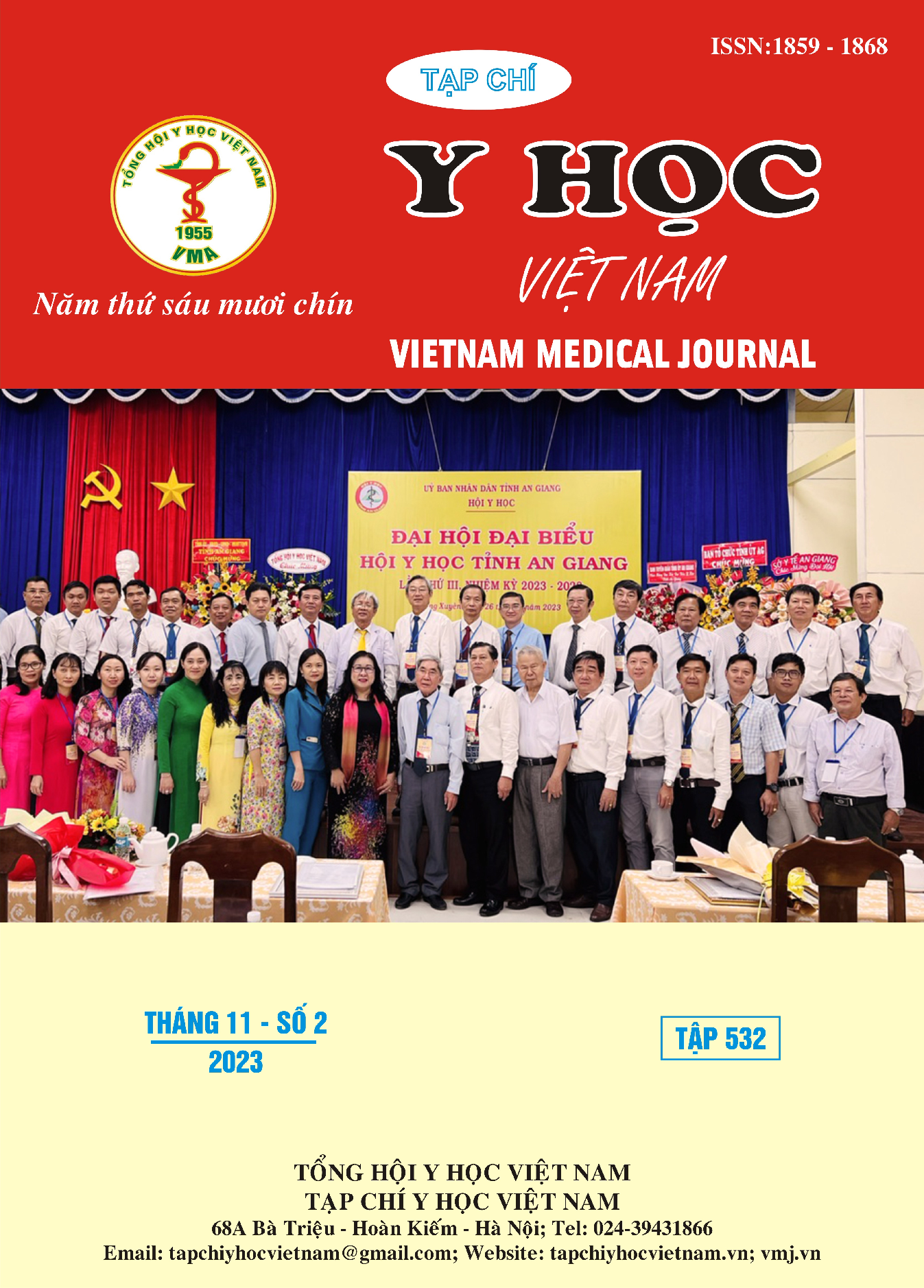THE FIRST EVALUATION OF THE EFFECTIVENESS OF RADIOFREQUENCY ABLATION IN THE TREATMENT OF HEPATOCELLULAR CARCINOMA BY T1 PULSE REMOVE FAT WITHOUT INJECTION OF MAGNETIC CONTRAST
Main Article Content
Abstract
Objectives: The first of the effectiveness of radiofrequency ablation in the treatment of hepatocellular carcinoma by T1 pulse sequence to remove fat without injection of magnetic contrast; Subjects and methods: The study was conducted on 71 patients with hepatocellular carcinoma who were treated with radiofrequency ablation and evaluated by magnetic resonance using T1 pulse sequence to remove fat without contrast injection. from Tan Trieu K Hospital, from August 2022 to June 2023. Results: The age group from 51-70 years old accounted for 73%; The rate of hepatitis B virus infection accounted for 97.2%; hepatitis C accounted for 29.6%; Most patients had AFP < 20 ng/ml accounted for 46.5%; AFP 20 - 199 ng/ml accounted for 38%; The proportion of patients with tumors near the liver capsule accounted for 32.4%; Most tumors are ≤ 30 mm accounted for 91.5%; Most of the patients were burned after the embolization accounted for 36.6%; The majority of using single needle accounted for 97.2%; AFP levels tend to decrease after 1 month and 3 months of treatment; The majority of necrosis around the tumor > 5mm after 24 hours accounted for 42.3% and no recurrence was observed in the first 3 months after burning. Conclusion: The study supports doctors in the application of T1 pulse remove fat without injecting contrast from liver cancer treatment by radiofrequency ablation within 24 hours to evaluate the area of tumor burning after intervention, early assessment of the effectiveness of interventions to guide treatment or follow-up.
Article Details
Keywords
Hepatocellular carcinoma (HCC), AFP (alpha-fetoprotein), RFA (Radiofrequence ablation), MRI (Magnetic Resonance Imaging), CLVT (Computed Tomography Scan).
References
2. Chen M. H., Yang W., and Yan K. et al. (2008), "Radiofrequency ablation of problematically located hepatocellular carcinoma: Tailored approach", Abdom. Imaging.(33), pp. 428 – 436.
3. Clarisse Dromain, Thierry de Baere, and Dominique Elias (2002), "Hepatic Tumors Treated with Percutaneous Radio-frequency Ablation: CT and MR Imaging Follow-up", Radiology. 233, pp. 255-264.
4. Forner A, Reig M, and Bruix J. (2018), "Hepatocellular carcinoma", The Lancet., p. 391.
5. Hyuna Sung (2021), "Global Cancer Statistics 2020: GLOBOCAN Estimates of Incidence and Mortality Worldwide for 36 Cancers in 185 Countries", CA Cancer J Clin., pp. 1-15.
6. International Agency for Research on Cancer (IARC) (2020), "Global Cancer Observatory—Vietnam Population fact sheets".
7. Masahiko Koda, Shiho Tokunaga, and Kennichi Miyoshi (2013), "Ablative margin states by magnetic resonance imaging with ferucarbotran in radiofrequency ablation for hepatocellular carcinoma can predict local tumor progression", J Gastroenterol., pp. 1283-1292.
8. Shintaro Mikami, Shuichiro Shiina, and Masaaki Akahane (2012), "Computed Tomography Follow-up for the Detection of Hepatocellular Carcinoma Recurrence after Initial Radiofrequency Ablation: A Single-center Experience", Journal of Vascular and Interventional Radiology, pp. 1269-1275.


